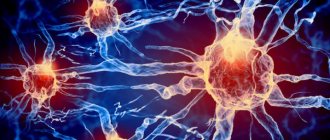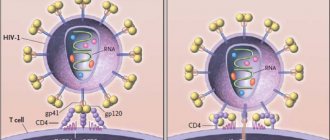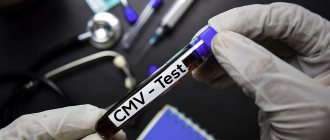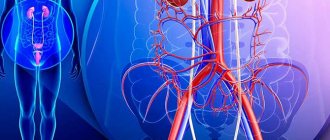In addition to the fact that the incidence of coronavirus is growing, doctors - as well as places in hospitals - are becoming less and less, test results are waiting for a long time, those doctors who remain in service make a number of mistakes when prescribing a treatment regimen.
An infectious disease doctor and researcher at PSPbSMU named after A.V. helped to understand the situation Academician I.P. Pavlova Oksana Stanevich together with the “Not in vain” foundation.
We will talk about what mistakes doctors make, what examinations, in addition to the COVID-19 test, show the presence of coronavirus, why you should not immediately take antibiotics, and what medications you should have at home.
Playing blind
Most outpatient doctors immediately prescribe medications without properly examining the patient. The worst thing is that the doctor, in the absence of information, cannot adequately formulate his own indications for hospitalization.
“It often happens that people come to the hospital, literally breaking all the laws, doing tests on their own in a commercial laboratory, deceiving their doctor, deceiving the laboratory, saying that he is not sick with Covid, and self-propelled - on foot, in personal transport, in a taxi - arrives to the hospital in serious or moderate condition.”
What additional examination is needed?
When infected with coronavirus, it is necessary to constantly monitor saturation indicators, which are measured with a pulse oximeter. This device looks like a clothespin that is attached to your finger. It shows how saturated the blood is with oxygen, i.e. saturation. It is measured as a percentage, and the norm for a healthy person without diseases of the lungs and cardiovascular system is 98−99%.
During coronavirus infection, saturation should be measured at least 4 times a day and for at least 30 seconds.
Photo: Vladimir Gerdo/TASS
Additional examination, which should be prescribed by the attending physician, may include a chest examination on a computed tomography (CT) scanner, a complete blood count, a blood test for c-reactive protein* and d-dimer*.
Based on these indicators, it is possible to timely determine the criteria for hospitalization, even if saturation indicators do not deviate greatly from the norm.
Example: a 49-year-old woman had a temperature above 38.5 for five days, a terrible cough, and shortness of breath. At the same time, saturation did not fall below 95%. She took tests, and the value for c-reactive protein was 126. The norm for this indicator is up to 5. Such a pronounced increase can be considered the start of a cytokine storm*, which is considered a complication of coronavirus infection. The woman called an ambulance, the doctor listened to her and did not hear anything in the lungs, which happens very often with covid pneumonia. The doctor told her that the blood tests meant nothing at all and left. She, breaking quarantine, came to the hospital through an acquaintance, where she underwent a CT scan, which showed that 65% of her lungs were affected. This corresponds to the third degree of lung damage out of four.
*Cytokine storm is an excessive immune response of the body to an infection that affects organs without the participation of a pathogen.
*C-reactive protein (CRP) is a highly sensitive indicator of inflammation and infection and responds to significant tissue damage.
*D-dimer - intensity and nature of thrombus formation processes.
A significant increase in c-reactive protein begins with a reading above 50.
In the photo: a patient undergoing examination on a computed tomography machine (Photo: Sergey Savostyanov/TASS)
Compound:
One tablet contains:
active substance
: azithromycin dihydrate in terms of azithromycin 250 mg/500 mg;
Excipients
: lactitol 300.0 mg / 600.0 mg, calcium phosphate dihydrate 59.8 mg / 119.6 mg, corn starch 24.0 mg / 48.0 mg, croscarmellose sodium 20.0 mg / 40.0 mg, magnesium stearate 6.0 mg / 12.0 mg, hypromellose 5.0 mg / 10.0 mg, sodium lauryl sulfate 1.2 mg / 2.4 mg, microcrystalline cellulose to obtain an uncoated tablet weighing 700 mg / 1400 mg;
Excipients of the shell:
hypromellose 9.49 mg/
18.98 mg, titanium dioxide 5.2 mg/10.4 mg, macrogol-4000 3.744 mg/7.488 mg, talc 1.12 mg/2.24 mg, povidone-K17 0.416 mg/0.832 mg, dye tropeolin O 0.030 mg / 0.060 mg to obtain a coated tablet weighing 720 mg / 1440 mg
Useless antibiotics
One of the common mistakes is prescribing antibiotics. But antibiotics have no effect on the coronavirus itself.
Back in the spring, research was carried out “in a hurry” and a regimen was developed - a combination of azithromycin and hydroxychloroquine. In laboratory conditions, hydroxychloroquine showed a positive effect, and the antibiotic azithromycin was used as a “courier” of hydroxychloroquine inside the cell.
In practice, this combination did not work. It did not improve the outcome of the disease, and people died just as often as those who did not receive these drugs. Moreover, this combination does not shorten the length of hospitalization and does not shorten the stay of the virus in the body.
Use during pregnancy and lactation
Contraindicated. There are no controlled studies of the use of azithromycin in pregnant women. In this regard, the drug can be prescribed during pregnancy only for health reasons.
Azithromycin may pass into breast milk. However, research into its effect on the child through breastfeeding has not been studied. Therefore, during lactation, the use of azithromycin is possible after a careful assessment of the ratio of the expected benefit for the mother and the possible risk for the child.
A study on the effect of azithromycin on fertility was conducted on rats. A decrease in pregnancy rates was found after the administration of azithromycin. But the relevance of these data to humans is unknown.
Disservice
Azithromycin itself did not initially work and was simply a conduit for hydroxychloroquine. Even without reference to the coronavirus, Russian people are accustomed to treating any infection with antibiotics. And, what is absurd, outpatient doctors continue to use the azithromycin monotherapy regimen in the treatment of coronavirus infection.
Pneumonia caused by different causes (viruses or bacteria) affects the lung tissue in different ways, and for this reason, treatment tactics will differ.
There are 4 lines of antibacterial drugs on the World Health Organization (WHO) list that should be used in certain situations. The notorious azithromycin is included in the second line and is used for specific indications.
In addition, there is a list of antibiotics that are not recommended for use in certain combinations, because they have very pronounced side effects.
Now the most common combination of coronavirus treatment at the prehospital stage is a combination of azithromycin and levofloxacin. This particular combination is not recommended by WHO. It is prohibited by clinical pharmacologists, including in Russia.
Photo: Anton Vergun/TASS
"Azithromycin", instructions for use
Azithromycin is a drug that belongs to the group of antibiotics - substances with a complex chemical structure and a wide spectrum of antibacterial action.
The activity of the drug is manifested against gram-positive and gram-negative microbes and anaerobes - bacteria that receive energy for life in the absence of oxygen. The drug belongs to the macrolide class and has two mechanisms of action:
- Bacteriostatic - inhibits the formation of protein in cells, which leads to stopping the growth and reproduction of bacteria.
- Bactericidal - in high concentrations it destroys the cells of microorganisms, which leads to their death.
Spectacular side effect
The regimen of hydroxychloroquine and azithromycin that was initially recommended has significant side effects. Hydroxychloroquine damages the heart tissue, which can lead to heart rhythm disturbances, including paroxysmal atrial fibrillation. A rhythm disturbance can cause cardiac arrest or provoke the formation of blood clots.
The fact that hydroxychloroquine not only does not work, but is also harmful, became clear back in the summer. However, outpatient and sometimes inpatient doctors continue to prescribe it.
Moreover, it is included in clinical recommendations and, for example, in St. Petersburg is given free of charge to people who are being treated for Covid at home.
The azithromycin and levofloxacin regimen is also toxic to the heart and also disrupts the heart rhythm.
***
When taking antibiotics as an outpatient, antibiotic-associated diarrhea often occurs. This may hide a more serious complication - pseudomembranous colitis. Simply put, it is an inflammation of the large intestine where plaque-like, membrane-like formations appear on its walls. This manifests itself as an increase in bowel movements up to 5-10 times a day, but can reach up to 20 times.
When bacteria multiply, many toxins are released into the blood, which can lead to fever, intoxication, dehydration and septic condition. In extreme cases of dehydration, the kidneys, heart and brain begin to suffer.
The intestines may not work until intestinal paresis occurs. This condition can only be treated with surgery and is potentially life-threatening.
“We have had several cases where we have proven the occurrence of colitis due to pre-hospital antibiotic use. There is an analysis that allows us to determine that this is pseudomembranous colitis. This is a stool test for toxins A and B. Even if one toxin is detected, it is already colitis.”
Unfortunately, coronavirus infection simply does not have an application point for the use of antibiotics. It is impossible to cure Covid with antibiotics.
“A fatal complication of coronavirus infection—acute respiratory distress syndrome, when suddenly all the lungs shut down, the affected area expands, respiratory failure develops, and the person dies—antibiotics do not help.”
Interaction with other drugs and other types of interactions
Prescribe with caution to patients concomitantly taking medications that prolong the QT interval.
The following clinically significant interactions of azithromycin have been identified when taken concomitantly with other drugs and preparations:
- antacids. Reduce the maximum concentration of azithromycin in the blood by 30%. Therefore, the antibiotic is taken 1 hour before meals or 2 hours after antacids. However, they do not affect the bioavailability of azithromycin;
- digoxin and colchicine. It is possible to increase the concentration of digoxin in the blood, since azithromycin increases the absorption of digoxin in the intestine;
- statins (atorvastatin). Cases of rhabdomyolysis have been reported in patients who simultaneously received Azithromycin and statins. At the same time, the simultaneous use of atorvastatin 10 mg per day and azithromycin 500 mg per day did not cause changes in the plasma concentration of atorvastatin in the blood;
- cisapride. Macrolide antibiotics inhibit the CYP34A enzyme, and cisapride is metabolized in the liver by this enzyme. In this regard, the combined use of azithromycin and cisapride may provoke a change in the QT interval, as well as cause ventricular arrhythmia or torsades de pointes;
- nelfinavir. There is an increase in the concentration of azithromycin in the blood;
- fluconazole. There was a slight decrease in the maximum blood concentration of azithromycin, by approximately 18%;
- cyclosporine. When used simultaneously with azithromycin, a significant increase in the maximum concentration of cyclosporine in the blood was found. In this regard, caution must be exercised when using these drugs simultaneously. If combination treatment is necessary, it is necessary to adjust the dosage of cyclosporine and its concentration in the blood;
- coumarin anticoagulants. Azithromycin does not affect the anticoagulant effect with a single dose of 15 mg of warfarin. But in the post-marketing period, cases of increased bleeding tendency have been reported when taking azithromycin and warfarin. In this regard, it is necessary to pay attention to monitoring prothrombin time;
- ergotamine and hydroergotamine. Macrolides can cause toxic effects.
The deficit we create ourselves
Since spring, people in panic began to buy everything they thought they needed. At first it was buckwheat and toilet paper, then lemons, garlic and ginger, then medical masks, and gradually the turn came to basic mercury thermometers and medicines.
Those who have encountered coronavirus infection more closely may know about the drug dexamethasone, its analogue is prednisolone. Now it is almost impossible to find dexamethasone in pharmacies. There have been rumors that it can supposedly cure cytokine storm, is effective in preventing coronavirus, or can stop the more complex, fatal course of covid.
In the photo: oxygen concentrator (Photo: Sergey Malgavko/TASS)
“Back in the summer, a study was conducted in the UK, which showed that the administration of dexamethasone actually improved the outcome of the disease and made it possible not to develop more severe respiratory failure. However, there was one “but”, which for some reason is again not taken into account anywhere. The benefit of dexamethasone has been shown only in combination with oxygen support (prescribed when saturation decreases below 95%). In the absence of oxygen support, outcomes did not improve and there was even a trend towards worse outcomes.”
In outpatient treatment, dexamethasone cannot help. And if you decide to buy it “just in case,” then do not forget to buy an oxygen concentrator, the cost of which varies around 60-70 thousand rubles.
Note!
The description of the drug Azithromycin on this page is a simplified author’s version of the apteka911 website, created on the basis of the instructions for use.
Before purchasing or using the drug, you should consult your doctor and read the manufacturer's original instructions (attached to each package of the drug). Information about the drug is provided for informational purposes only and should not be used as a guide to self-medication. Only a doctor can decide to prescribe the drug, as well as determine the dose and methods of its use.
Time for antibiotics: when needed
In the early stages - up to the 8th-9th day - there can be no talk of antibiotics at all. During this period, coronavirus pneumonia develops, which cannot be stopped by prescribing antibiotics.
Some may develop secondary bacterial pneumonia. This occurs more often in people with an initially suppressed immune status. For example, with decompensated diabetes mellitus.
“When there is a lot of glucose in the blood, bacterial microflora has a greater chance of superimposing viral pneumonia and stimulating the proliferation of bacteria in the lungs. It has certain laboratory signs. We cannot prescribe antibiotics for diabetes and Covid for prevention. Because it won’t work for prevention, antibiotics don’t prevent secondary bacterial pneumonia, they only treat it.”
To prevent the development of bacterial pneumonia, it is necessary to reduce glucose levels with the help of glucose-lowering drugs or insulin under the supervision of a doctor.
Photo: Vladimir Gerdo/TASS
Signs of secondary bacterial pneumonia
With secondary bacterial pneumonia, a clinical blood test will show an increase in the level of leukocytes, neutrophils, including their immature forms.
The patient may develop purulent sputum, colored - green, rusty, streaked with blood. Sputum may become more abundant.
Another sign of the development of secondary bacterial pneumonia is an increase in body temperature to 38.5 degrees or higher in the later stages - 12-14 days of Covid disease.
After 2 weeks of coronavirus infection in the body and the development of covid pneumonia, changes occur in the lung tissues that are most convenient for the addition of bacteria and the development of bacterial pneumonia.
“Changes in the lungs after covid pneumonia persist for about 8 weeks after recovery. This does not mean that post-Covid pneumonia needs to be treated somehow. Saturation should be restored to your normal by the end of the infection.”
Pharmacotherapeutic group
"Antibacterial agents for systemic use."
Pharmacological properties
Pharmacodynamics
Azithromycin is a macrolide antibiotic belonging to the azalide group. The therapeutic effect is based on its ability to inhibit the synthesis of bacterial proteins by binding to the 50S ribosomal subunit and suppressing peptide translocation.
Azithromycin helps slow down the growth of bacteria and their reproduction, and also has bactericidal properties. Affects intracellularly and extracellularly located pathogens.
It is necessary to take into account the ability of pathogens to be initially resistant to the action of an antibiotic, as well as the possibility of developing secondary resistance.
Aerobic gram-positive and gram-negative microorganisms (Staphylococcus aureus, (methylcillin-sensitive), Streptococcus pneumoniae (penicillin-sensitive), Streptococcus pyogenes, Haemophilus influenzae, Haemophilus parainfluenzae, Legionella pneumophila, Moraxella catarrhalis, Pasteurella multocida, Neisseria) are considered sensitive to the action of azithromycin gonorrhoeae), anaerobic microorganisms (Clostridium perfringens, Prevotella spp.,), other pathogens (Chlamydia trachomatis, Chlamydia pneumoniae, Chlamydia psittaci, Mycoplasma pneumoniae, Mycoplasma hominis, Borrelia burgdorferi).
Streptococcus pneumoniae, Enterococcus faecalis and Staphylococcus aureus, methicillin-resistant Staphylococcus aureus, beta-hemolytic streptococcus group A show complete cross-resistance to azithromycin.
Therapy of despair
The new virus has misled the entire global medical community, researchers and experts. What can we say about the paramedics and doctors who come to our home when called. Patients with Covid are prescribed azithromycin, arbidol, hydroxychloroquine, and other useless, unnecessary or dangerous drugs.
Indeed, it happens that doctors do not know what to prescribe, and they prescribe at least something for the sake of prescribing, to reassure the patient and give him hope that he will recover. Do not forget that they follow the guidelines approved by the Ministry of Health, the schemes of which are used only in Russia.
Photo: Alexander Demyanchuk/TASS
“I started to get the impression that outpatient doctors weren’t just doing this to prescribe. They want to reassure not only the patient, but also to overcome their fear of this infection and their fear of complications that may arise suddenly. It feels like they are trying to use everything, but as a therapy for despair. Thus, they delay the moment of what they believe are complications, and they also gain time for themselves, giving themselves the opportunity to reduce their vigilance towards this patient. So the doctor shifts responsibility to those who created these clinical recommendations.”
There are also those who have not read clinical studies or studied the opinions of the world medical community. Prescriptions by such doctors occur out of ignorance.
Coronavirus therapy now [RECOMMENDATIONS] First aid kit for Covid
These recommendations from our expert should only be used after consultation with your doctor.
- If possible, buy a pulse oximeter and monitor your saturation readings.
- Of the medications, first of all, it is necessary to have any antipyretics. The WHO warning that some antipyretics worsen the course of the new coronavirus infection has now been completely debunked. This warning was withdrawn back in March.
- You can also use any usual painkillers (in the absence of individual contraindications).
- For those taking birth control pills or who have a tendency to clot, it is necessary to have anticoagulants. These are drugs that thin the blood and prevent the formation of blood clots.
- When taking anticoagulants and antipyretics, you need to remember to protect the stomach (omeprazole, famotidine, etc.) to avoid gastrointestinal bleeding.
- If you have a new coronavirus infection, you should drink more fluids to prevent dehydration and kidney problems.
Do not forget that the doctor must explain to the patient what he is prescribing and why.
*Based on materials from Oksana Stanevich’s broadcast for the “Not in vain” foundation and personal consultation for the “SP” publication.









